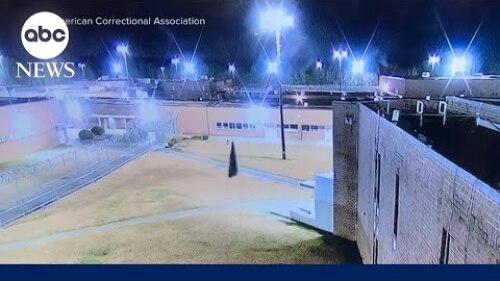By William Melhado
The Sacramento Bee
SACRAMENTO, Calif. — The violent assault of a California prison lieutenant by his subordinates last year is reflective of a broader climate that tolerates and normalizes abuse among the state’s correctional staff, a recent lawsuit against the California Department of Corrections and Rehabilitation alleges.
Lt. Erik Beam, a veteran with nearly two decades of experience with CDCR, asserted in a lawsuit filed in Sacramento Superior Court last month that fellow officers assaulted him over multiple years, at various prisons — and that correctional supervisors willfully neglected the abuse.
That culminated in an incident outlined in his recent complaint, where Beam’s colleagues at Salinas Valley State Prison doused him in water laced with pepper spray, grabbed his genitals to subdue him and handcuffed him to a wheelchair.
“We have to shine a light on misconduct, because we can’t allow it to continue anymore,” Terry Leoni , Beam’s attorney, said in an interview. Leoni said the assault Beam faced is another example of a culture of harassment and hazing that is tacitly allowed by CDCR.
CDCR did not respond to questions about Beam’s allegations, citing its policy to not comment on pending litigation. CDCR had not been served the lawsuit as of Friday evening. The department confirmed Beam is currently a lieutenant at the Substance Abuse Treatment Facility in Corcoran.
Beam began his career with CDCR in 2006, working in Corcoran State Prison. It was there, the lawsuit alleges, that he learned about the “Code of Silence,” which the complaint describes as an unspoken understanding that staff are harassed, ostracized and assaulted if they “snitched” on fellow officers.
Over the decades, Beam transferred between Corcoran and Salinas Valley. At both institutions, Beam asserted he was harassed by his colleagues in similar ways. That included dousing Beam with water laced with pepper spray.
“They’re hundreds of miles apart, so it’s hard for me to say that that’s just a coincidence, and it’s not institution wide,” Leoni said.
Last year, Beam asked to transfer to the Substance Abuse and Treatment Facility in Corcoran from Salinas Valley State Prison where he had been working since 2016.
On his last day at Salinas Valley on June 21, prison staff gathered for a send-off party for Beam. The event culminated in several colleagues drenching Beam in pepper-spray laced water, his lawsuit alleges. After he returned to his office to clean up, several of Beam’s subordinates followed him and again doused him with contaminated water and attempted to handcuff him to a CDCR-owned wheelchair. The lawsuit alleges that several officers who participated in the harassment had the intent of leaving the lieutenant restrained to the wheelchair in the showers used by inmates.
Beam resisted and his colleagues allegedly stomped on his foot repeatedly and grabbed his genitals to subdue him. The lawsuit alleges Beam’s subordinates successfully restrained him to a wheelchair and began wheeling him down a hallway past the offices of CDCR supervisors and inmates, which “created real and imminent fear” for the lieutenant.
A correctional counselor “appeared shocked” when she saw Beam being wheeled down a hallway, the complaint states, but the supervisor did not intervene. The failure to act was allegedly in violation of CDCR’s operational manual. It was at or near this time that Beam was released, the complaint asserts, after which he promptly went home.
The complaint said Beam suffered “significant physical pain to his groin and foot” and, in addition to missing a pre-planned family vacation due to the incident, faced serious humiliation and mental anguish as a result of the assault.
The incident, captured on video, was shared with other CDCR employees, furthering Beam’s humiliation. The lawsuit claimed that the video of the assault “reinforced a culture where cruelty is normalized, dignity is disposable, and rules flouted.” In January, CDCR rejected Beam’s request seeking damages.
The assault Beam suffered last year, in addition to the previous years of hazing, are reflective of a broader pattern of tolerating abusive behavior within California’s correctional system, he asserts in the complaint.
The filing points to other high-profile instances when CDCR employees were harassed, threatened and mistreated by other officers. Two of those cases of severe harassment ended in the deaths of CDCR correctional staff, one by suicide and the other by accidental fentanyl intoxication.
Beam and his attorneys allege the same toxic culture at California State Prison in Sacramento, widely known as New Folsom, where the two deceased CDCR officers worked is present at other state prisons.
“Let’s just say it’s just at one prison. Should we be OK with that?” Leoni said. “No, everyone has a right to be safe at work.”
—
©2025 The Sacramento Bee. Visit sacbee.com. Distributed by Tribune Content Agency, LLC.






